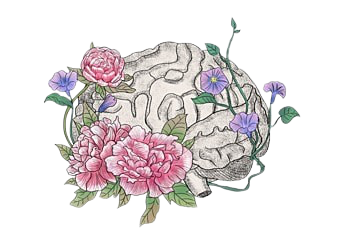
This article details the phenomenon of “Imposter Syndrome” and proposed three therapeutic modalities for addressing it: Narrative Therapy, Mindfulness, and Dialectical Behavior Therapy (DBT). It was originally published on TRT-group.com, the group therapy practice where I work.
Feeling like you belong gives a person self-esteem and confidence, and having community is a protective factor building resilience through obstacles like life transitions, divorce, loss, and even daily stressors. In contrast, Imposter Syndrome, a popular phrase describing anxiety symptoms like self-doubt, impending failure, and low self-worth, does just the opposite. Even if a person has every right to be where they are, anxiety curls the edges of self-certainty like a slow-growing mold turning what should be a given into stomach-aching uncertainty and a sense of inadequacy. Feelings like this often derive from unprocessed trauma and neglect, perfectionism, and experiences of rejection or betrayal as well as genetics or brain chemistry. Anxiety is one of the main reasons people seek out therapy, and here are some ways therapy can help.
Each therapeutic modality understands the source of anxiety differently
and offers an approach to treat it based on that theory.
Mindfulness
Looking at Imposter Syndrome through the lens of Mindfulness, anxiety is a type of suffering. All humans experience pain, and suffering is what gets added on, complicating and distorting the original experience so it’s hard to access. A Mindfulness-based therapist uses different Mindfulness techniques to help metaphorically clear out the vines in the anxiety-jungle until the root cause of pain can be seen, addressed, held, felt, and accepted. This might be achieved through metta-meditation, sending self-love, tenderness and compassion to a part that feels broken and unworthy. It can mean building patience by sitting with and getting curious about discomfort, having forgotten memories resurface, coregulating with the therapist through meditation or focused presence, and learning to more quickly access wise, embodied, inner resources. Scientists have studied how these practices change the human brain in ways increasing a person’s generosity–both to themselves and others.
Medication
Psychiatrists see anxiety as a physiological response inside the body, an interaction of neural networks, messaging inside the brain that leaves bodies on high alert. Working with a doctor, medications can be found to treat individuals’ unique anxiety symptoms, taking into account other symptoms or medications they may be on already. Occasionally prescriptions aren’t the whole answer, specifically when a person finds medications are not working or there is unresolved trauma. In those cases, therapy can fill in the gaps or be the only answer. Therapists collaborate with psychiatrists for best practices and to provide coordinated care.
Dialectical Behavior Therapy (DBT): Core Beliefs
Infants form opinions about themselves and their environment before they have language to express it. Often these beliefs show up somatically, in how people act, feel, and in deep-seated beliefs about who a person is. According to DBT therapists, Core Beliefs about low self-worth are one reason why anxiety-induced struggles can cause emotional dysregulation. Since these beliefs were developed before language, they often go unchallenged and harden into assumptions. DBT therapists challenge Core Beliefs by holding them up to the evidence, helping people challenge hasty and painful conclusions to lessen anxiety and distress.
Narrative Therapy
A Narrative Therapist might explore the “problem” of imposter anxiety from many different angles to flesh out the experience across a timeline. Clients are encouraged to consider how the anxiety might actually have helped them in some ways, adding complexity and nuance to their story. Additionally, the therapist would guide the Client in assessing who and what the problem affected and times when the problem wasn’t actually a problem at all. Eventually, the story of the problem comes to life in ways that give agency back to the individual and a more amenable future can be imagined.
Conclusion
In closing, a true imposter is not anxious about being one. A real imposter takes pride in the trick they’re playing at someone else’s expense. In contrast, the individual worrying they are an imposter is by nature of their worrying not one! A person experiencing anxiety about being an imposter, thinking about how they are perceived and the effect they have on others, is clearly capable of sensitivity and insight, and likely not an imposter at all. All in all, it is the vision of being an imposter that is the imposter, and the one who sees the farce just might be the hero.
Samm Becker is a trauma-focused therapist offering Telehealth based in Echo Park, Los Angeles and across the state of California. Her practice is informed by Mindfulness, EMDR training, and narrative therapy. She specializes in treating individuals, couples, and adolescents.

